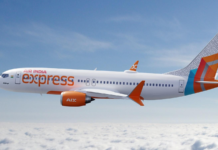Airports Council International Asia-Pacific & Middle East (ACI APAC & MID) has urged governments and regulators to adopt forward-looking policies that will prepare the aviation sector for an unprecedented surge in demand. Speaking at the 60th ICAO Conference of Directors General of Civil Aviation (DGCA) for the Asia and Pacific regions, held in Sendai, Japan, the trade body—representing more than 600 airports across the region—outlined a series of policy recommendations aimed at building airports that are smarter, safer, sustainable, and more connected.
The stakes are high. By 2053, airports in Asia-Pacific alone are projected to handle 10 billion passengers annually—equivalent to today’s total global traffic. To accommodate this scale of growth, ACI APAC & MID called on states to promote affordable air travel while ensuring airports enhance safety standards, strengthen climate resilience, and integrate security considerations into design from the outset.
“Asia is already home to six of the world’s fastest-growing markets, with countries like China, India, Indonesia, Japan, Vietnam, and Thailand expected to enter the billion-passenger club in the decades ahead,” said Stefano Baronci, Director General of ACI Asia-Pacific & Middle East. “With over half of all new aircraft deliveries bound for this region and air traffic movements projected to reach 47 million by 2043, the real challenge is not growth but readiness. The DGCA Conference once again highlighted the collective commitment of states and industry to work towards sustainable, future-ready aviation.”
Four Key Policy Papers
ACI APAC & MID presented four working papers at the conference, all of which received strong endorsement from member states:
1. Adapting ICAO Annex 14 SARPs
ACI cautioned against a one-size-fits-all approach when transposing ICAO Standards and Recommended Practices (SARPs) into national regulations. Instead, it advocated for the development of tailored national aerodrome standards based on regional guidance, ensuring operational realities and safety priorities are not compromised. The conference endorsed the recommendation, with ICAO urging states to apply the guidance and provide feedback.
2. Climate Adaptation Tools
Recognising the growing impact of extreme weather events on airport operations, ACI introduced its Climate Adaptation Guidance, Risk Maturity Tool, and Climate Risk Assessment Tool. These instruments are designed to help airports evaluate and mitigate risks from hazards such as floods, cyclones, and heatwaves. The conference adopted the proposals and called for regional collaboration to enhance resilience across the aviation network.
3. Removing Barriers to Air Travel (co-sponsored by IATA)
In collaboration with the International Air Transport Association (IATA), ACI appealed to states to abolish discriminatory taxes on aviation, streamline visa procedures, and ensure concession fees take into account the financial sustainability of airport operators. These measures, they argued, would make travel more affordable and accessible while supporting aviation’s role as a driver of economic and social growth.
4. Security-by-Design in Airport Infrastructure (co-sponsored by Singapore and the USA)
ACI reiterated its call for airports to integrate security into the design phase of new or refurbished infrastructure. This “security-by-design” approach ensures facilities are built to meet evolving security requirements without the costly retrofits and inefficiencies often associated with afterthought solutions. The proposal, backed by Singapore and the United States, received full endorsement from the conference.
A Regional Vision for Global Growth
The recommendations underscore Asia-Pacific aviation’s dual challenge: managing extraordinary passenger growth while aligning with global sustainability and security standards. With airports in the region on the frontline of this transformation, ACI stressed the need for continuous cooperation among governments, industry bodies, and regulators.
The 60th ICAO DGCA Conference brought together Directors General of Civil Aviation from across Asia and the Pacific, ICAO officials, and international aviation organisations for five days of high-level discussions. Delegates reviewed states’ implementation of ICAO SARPs and coordinated on key priorities, including safety, security, sustainability, airport economics, and infrastructure development.
Baronci concluded: “The overwhelming support from states for our recommendations reflects a shared vision for aviation’s future in this region. By working together, we can ensure airports continue delivering essential social and economic benefits while keeping pace with growth, climate, and security challenges.”











